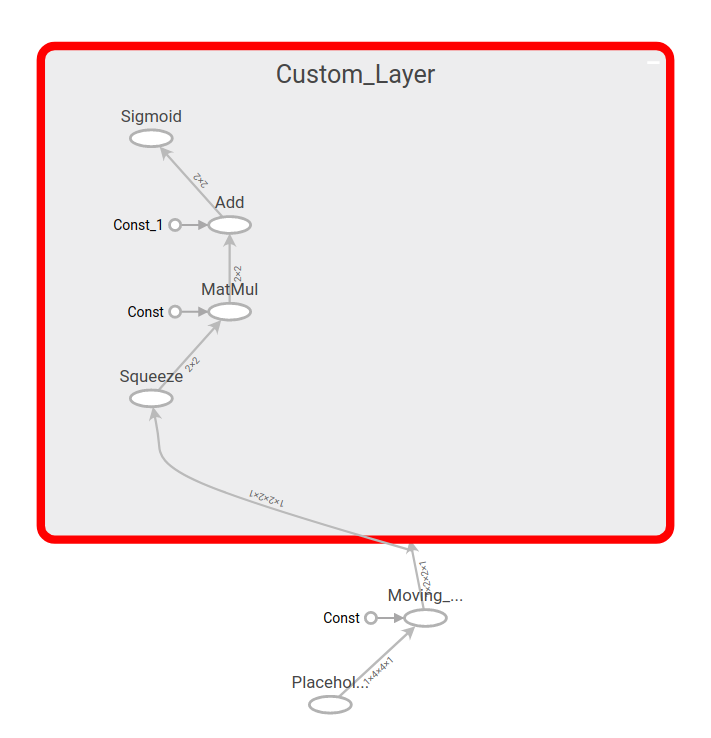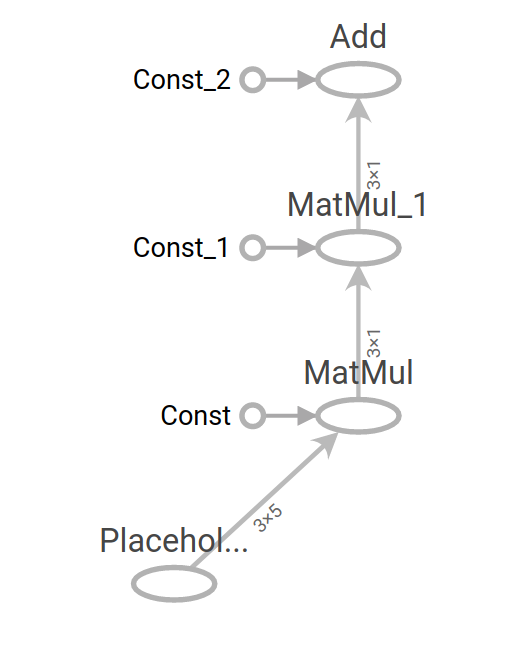#-*- coding:utf-8 -*- #Tensorflow的嵌入Layer import numpy as np import tensorflow as tf sess=tf.Session() #创建占位符和数据 my_array=np.array([[1.,3.,5.,7.,9.], [-2.,0.,2.,4.,6.], [-6,-3,0.,3.,6.]]) x_vars=np.array([my_array,my_array+1]) x_data=tf.placeholder(tf.float32,shape=(3,5)) #创建矩阵乘法和加法中要用到的常用矩阵 m1=tf.constant([[1.],[0.],[-1.],[2.],[4.]]) m2=tf.constant([[2.]]) a1=tf.constant([[10.]]) #声明操作,表示成计算图 prod1=tf.matmul(x_data,m1) print sess.run(prod1,feed_dict={x_data:my_array}) print '-'*80 prod2=tf.matmul(prod1,m2) print sess.run(prod2,feed_dict={x_data:my_array}) print '-'*80 add1=tf.add(prod2,a1) print sess.run(add1,feed_dict={x_data:my_array}) print '-'*80 #tensorboard --logdir=/path/to/log-directory #运行上面的代码,可以用tensorboard可视化,最好利用chrome,Firefox好像不怎么支持 for x_var in x_vars: writer = tf.summary.FileWriter('./graphs', sess.graph) print sess.run(add1,feed_dict={x_data:x_var}) writer.close()
#-*- coding:utf-8 -*- #Tensorflow的多层Layer import numpy as np import tensorflow as tf sess=tf.Session() #通过numpy创建2D图像,4x4像素 x_shape=[1,4,4,1] x_val=np.random.uniform(size=x_shape) #创建占位符 x_data=tf.placeholder(tf.float32,shape=x_shape) #创建滑动窗口 my_filter=tf.constant(0.25,shape=[2,2,1,1]) my_strides=[1,2,2,1] mov_avg_layer=tf.nn.conv2d(x_data,my_filter,my_strides,padding='SAME',name='Moving_Avg_Window') #自定义Layer,操作滑动窗口平均的2x2的返回值 def custom_layer(input_matrix): input_matrix_sqeezed=tf.squeeze(input_matrix) A=tf.constant([[1.,2.],[-1.,3.]]) b=tf.constant(1.,shape=[2,2]) temp1=tf.matmul(A,input_matrix_sqeezed)# temp=tf.add(temp1,b)# Ax+b return tf.sigmoid(temp) with tf.name_scope('Custom_Layer') as scope: custom_layer1=custom_layer(mov_avg_layer) print sess.run(custom_layer1,feed_dict={x_data:x_val})

